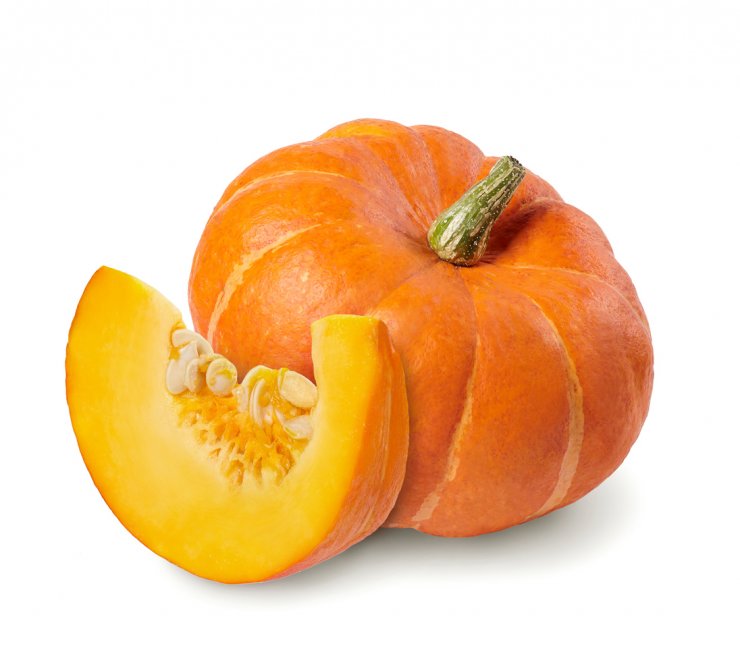
A ripe orange pumpkin
There are nine main species within the Cucurbita, or gourd, genus; they’re all part of the Cucurbitaceae family—cucumber. Cousins of your favorite baking pumpkins are squashes and gourds. Here’s a quick look at that whole set of species, just so you can see the relationship:
All pumpkins fall into these scientific classifications:
- Kingdom: Plantae (plants)
- Order: Violales
- Family: Cucurbitaceae (cucumber family)
- Genus: Cucurbita L. (gourd)
Species:
- Cucurbita digitata A. Gray—fingerleaf gourd
- Cucurbita ficicolia Bouché—figleaf gourd
- Cucurbita foetidissima Kunth—Missouri gourd
- Cucurbita maxima Duchesne—winter squash
- Cucurbita mixta Pang.—pumpkin
- Cucurbita moschata Duchesne—crookneck squash
- Cucurbita okeechobeensis L. H. Bailey—Okeechobee gourd
- Cucurbita palmata S. Watson—coyote gourd
- Cucurbita pepo L.—field pumpkin
But when we say pumpkin, what most of us picture is that big, round smiling jack-o’-lantern style pumpkin, an impossibly huge pumpkin, or a reliably round pumpkin that’s perfect for pumpkin pie. So, let’s narrow down that list to the pumpkins you’re more likely to grow for food, carving, or competition.
The pumpkin species gardeners most commonly grow are:
- Cucurbita pepo
- Cucurbita maxima
- Cucurbita mixta
- Cucurbita moschata
Most pumpkins belong to the species Cucurbita pepo (or just C. pepo), but there are some pumpkins in the species C. maxima, C. mixta, and C. moschata.
A word of caution before you go out to pick your pumpkin seeds: pumpkins of the same species can cross-pollinate. The seeds from those cross-pollinated plants could give you inedible gourds. So, if you have more than one variety from one species—eat the seeds, don’t plant them (unless you really feel like experimenting the next year).
Pumpkins are annuals, which means you need to plant new seeds every year. That can be a good thing—just in case some of your crop doesn’t turn out quite as expected.
Pumpkins are on the delicate side, in that they don’t like the cold, and a frost can really damage young seedlings. But since they’re an annual, all you have to do is wait until your last frost is over and make sure the soil is warm enough and balanced to welcome the seeds. So, hardiness zones are less of an issue; you just need a good idea of the length of your growing season.
What types of pumpkins have you tried growing? Were there any particular types that were really good to grow in your area? Please tell us about your favorite pumpkin types.


 Previous
Previous

